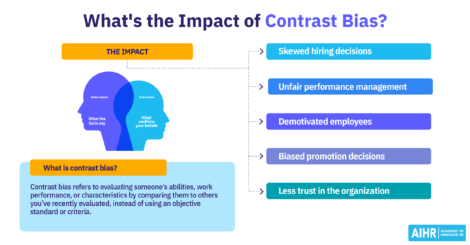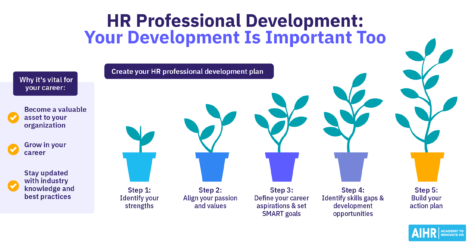5 Ways to Counter the Great Resignation with Your D&I Initiatives

You’ve had your hands full dealing with the fallout from the Great Resignation. Time to take back control and go into proactive mode. Using diversity and inclusion initiatives to enhance the employee experience is your recipe to come out of this era stronger. Expanding that experience to include DEIB (Diversity, Equity, Inclusion, and Belonging) makes your culture even more solid.
Look deep into your employee experience. Are you creating a great place to work beyond free lunches? Forging a sense of belonging in the workplace is the next step for HR to pursue in its D&I efforts. Read on for ways to use D&I / DEIB initiatives to help create a better employee experience.
Contents
Creating a sense of belonging – the need to do more
Belonging emerges as the key to an enhanced employee experience
5 ways to use D&I / DEIB initiatives to help build a better employee experience
Creating a sense of belonging – the need to do more
We know that when employees feel heard and valued, they are more engaged and satisfied. This underpinning is why our understanding of D&I is now expanding to DEIB (Diversity, Inclusion, Equity, and Belonging).
Harvard Business Review reports that “high belonging” rates are linked to astounding gains for organizations:
- 56% increase in job performance
- 50% drop in turnover risk
- 75% reduction in sick days
- 167% increase in employer promoter score
US businesses spend over $8 million on diversity training every year. Training that misses the mark because it ignores the need for employees to feel included. A sense of belonging among employees has been a key element in the broader discussion around diversity and inclusion that has been missing until recently.
Belonging emerges as the key to an enhanced employee experience
“Belonging” for an organization is about creating a safe environment. Each employee should have the comfort and freedom to express their individuality without fear of retaliation, reprisal, intimidation, or bullying.
It’s this “B” element that emerged as one of the driving factors during the Great Resignation. McKinsey found that employees’ top three factors for quitting during this time were:
- not feeling valued by their organizations
- not feeling valued by their managers
- not feeling a sense of belonging at work.
This was especially true for employees from underrepresented groups. Those who said they left because they didn’t feel they belonged at their companies were more likely to be employees who identified as non-White or multiracial.
This clearly suggests that creating a sense of belonging will be essential to creating a fulfilling employee experience and to employee retention.
5 ways to use D&I / DEIB initiatives to help build a better employee experience
Diversity is much more than outward appearance. It includes anything that adds to a diversity of perspectives – age, experience, remote working, education, etc.
Inclusion is the cardinal rule for shaping the foundations for belonging to function. It promises to hear and accept the voices and perspectives of all individuals.
Having an equitable workplace recognizes that what may work for one may not work for another. Individual differences and the need for similar experiences are recognized alongside the need for the varied journeys consequential to getting there.
So, how do you put this all together? How do you create a workplace culture with a transcendental employee experience that focuses on the future yet addresses the now?
1. Train leaders to be compassionate people managers
Organizational leaders need to fundamentally believe in an inclusive culture. They also need to be enthusiastic cheerleaders promoting it.
Leaders who have experiences in diverse environments are already halfway there. They could have learned this while studying abroad in a diverse setting, participating in training, or in networking conferences.
The research is clear on this point. What leaders say and do makes up to a 70% difference in whether an individual feels included. At all levels, it’s the manager/leader who sets the tone and models behavior for teams.
Leaders need to motivate, inspire, and lead with compassion and trust. The leaders who can propagate trust, pride, and a sense of community during difficult times are the ones who:
- show caring for their team members,
- communicate clearly and authentically, and
- remove obstacles.
2. Walk the talk: Small efforts matter to feeling included
It was inevitable that organizations would lose talent during the Great Resignation. They simply haven’t gone far enough in creating a culture that’s welcoming to all. It’s essential for managers to not only pay lip service to the idea of an inclusive culture.
Training to tackle bias— unconscious bias, in particular— increases the awareness vital to creating a feeling of inclusion. These are the biases that have been taken for granted and become ingrained into the broader societal culture.
Small changes can make a transformational impact. They send a message of inclusion and respect and function to create a safe space for everyone.
Here are some examples of small changes:
- Have leaders ask themselves: Do I always refer to one gender when giving examples? Do I give equal time to all meeting participants, even when they’re not in the room? Do I point out microaggressions when they occur, or do I participate?
- Proper pronunciation of an employee’s name. When leaders take the time to learn and practice a name, they give importance to the act via their example. It also encourages team members to do the same.
- Taking on uncomfortable conversations is the ultimate affirmation of inclusiveness by leaders. When managers don’t share similar backgrounds or appearances, they often say they feel uncomfortable discussing racial or gender issues. Simply being willing to take on the conversation humbly and despite the discomfort signals value and respect to employees.
3. Prioritize inclusivity
We know that more people at the table bring more ideas. Inclusion allows for those varied voices and perspectives to be heard and accepted.
Research from Deloitte found that organizations with inclusive cultures are:
- 2x as likely to meet or exceed financial targets
- 3x as likely to be high performing
- 6x as likely to be innovative and agile
- 8x as likely to achieve better business outcomes
As EY’s Global Learning Business Partnering Lead, Martin Hayter supports the learning of 90,000+ employees from over 25 different countries. He attests that diversity and open communication have been a simple way to stimulate innovation within the team. It’s also been a way to set itself apart from the competition.
“The team… brings more creativity and higher quality and we know that the content we develop is going to be applicable to different cultures, and to both emerging and mature markets.”
Leadership that prioritizes inclusivity capitalizes on the power of these diverse teams. Inclusive diversity is how the organization values and treats those different people’s contributions.
4. Create “doors” not “walls”
Allowing for the voices and perspectives of all individuals to be heard and accepted is a monumental task. After all, what works for one person or group may not work for another.
Women and other underrepresented groups are more likely to feel the sting of (often, unintended) barriers. Gender- and race-influenced perceptions— like being “bossy” or “angry” versus being “assertive”— create walls all around that make paths to power difficult.
Taking a page from our collective pandemic learning experience, we know that flexible work arrangements is one area that helps employees of all descriptions. Productivity and happiness for many improve both work and home lives—a win-win.
Creating tangible goals that actualize corporate equity ambitions is what will make paths accessible to all employees. Organizations, for example, can make substantial improvements in closing representation gaps through:
- offering skill development
- guided goal setting
- internal sponsorships.
5. Foster a high-trust, caring environment
Employees who feel taken for granted are not likely to stick around. Authentic gestures that go beyond tokenism to engage and reward employees are key. They demonstrate respect and caring to employees, so they stay.
Over half a million employees of the 100 Best Companies told Great Place to Work that what matters most are inclusive, high-trust cultures.
Employees want to bring their whole selves to work. Moreover, they want a culture that welcomes them to do precisely that. “Belonging” efforts can help employees connect to their coworkers and the organization. For example, onboarding, mentoring, community work, and social activities.
Organizations that climbed the 100 Best Companies ranking were those that made extra efforts during the pandemic. These were specific efforts aimed at caring for their employees, customers, and society.
Great Place to Work found that Black employees’ trust scores soared when their company instituted meaningful and continuous efforts around racial injustice conversations.
The insurance company Nationwide, in particular, experienced incredible gains after instituting policies aimed to show Black employees its commitment to creating a genuine and ongoing conversation about racial inequities.
To the question, “my work has special meaning,” Nationwide scored 90% among its Black employees– up 16 points from the previous year. This is compared to 49% on average in the US.
Over to you
So, there you have it. Counteracting the bitterness of the Great Resignation is possible.
Focus inward on your retained employees. Sweeten the employee experience with sincere and holistic D&I initiatives. Most importantly, emphasize a sense of belonging.
Take back control of your attraction and retention strategy and enjoy the benefits of the employee experience you helped to create.
Weekly update
Stay up-to-date with the latest news, trends, and resources in HR
Learn more
Related articles
Are you ready for the future of HR?
Learn modern and relevant HR skills, online













